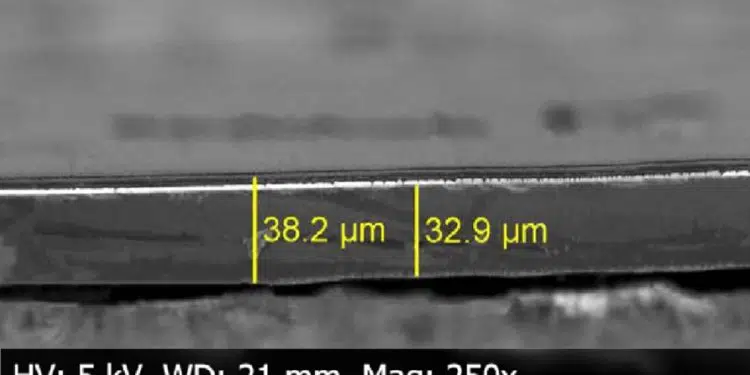Smoltek Nanotech Holding AB (“Smoltek”) announces that after completed tests and evaluations, the company has now placed an order for a machine for future industrial manufacturing of carbon nanofibers to the company’s ultra-thin CNF-MIM capacitors.
The machine, which will be installed at a semiconductor foundry, constitutes a central part of the production process that Smoltek is now establishing to be able to manufacture the company’s ultra-thin capacitors.
Smoltek conducts business operations within development, industrialization and licensing of technology solutions, based on the company’s patent protected carbon nanofiber technology. The company’s technology solutions for the Semiconductors business area are developed by the Group company Smoltek Semi. The focus is on industrializing and commercializing the company’s ultra-thin CNF-MIM capacitors.
By ordering an industrial carbon growth machine that is in line with the unique specifications – based on Smoltek’s patent protected manufacturing process for growth of carbon nanofibers with very high precision – another important step has been taken in the work of creating a production process to be able to manufacture ultra-thin CNF-MIM capacitors in very high volumes. The machine will be installed and qualified for mass production at a semiconductor foundry.
“It is inspiring that the work with establishing a production process for the manufacturing of our ultra-thin capacitors is proceeding in a satisfactory manner. We are currently in the design phase of the project, which is project phase three of five, where the final phase defines the finalized production process before production can begin,” says Karl Lundahl, VP Industrialization and Product Management, Smoltek Semi.
In parallel with the industrialization of the CNF-MIM technology, Smoltek Semi is also working on the development of the first product, which the company believes will be the world’s thinnest decoupling capacitor for application processors for mobile phones.
Smoltek Semi’s ambition over time is also to expand and broaden the product family of CNF-MIM based capacitors. Primary applications can be found in for example wearables, high performance computing (HPC) and 5G.
“An important aspect of the production process and supply chain that is now being developed by Smoltek Semi, is that it has a high degree of technical flexibility in combination with a scalability for manufacturing in extremely high volumes. The production process, including the carbon growth machine which we are now ordering, will therefore over time be able to be used for manufacturing of several different capacitor types based on Smoltek’s patent protected CNF-MIM technology,” says Ola Tiverman, President of Smoltek Semi.































